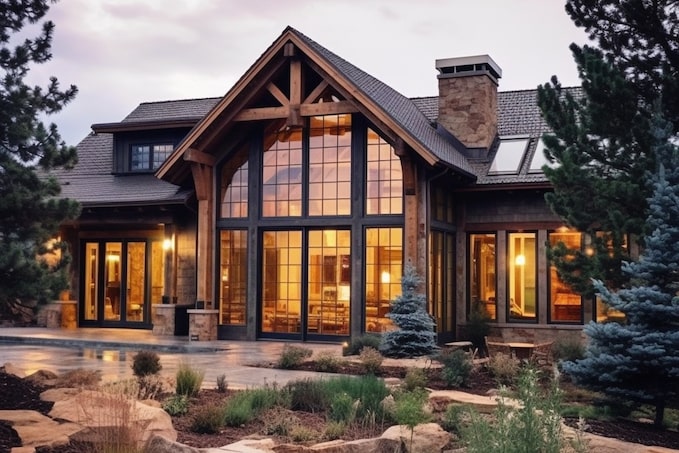Hello there! I’m Ashley Hickmon from Fairway Fast Mortgage, and I’m here to guide you through the seemingly complex landscape of conventional mortgages. Whether you’re an aspiring homeowner or looking to refinance, understanding the ins and outs of conventional mortgages is essential. In this comprehensive guide, we’ll discuss everything from what a conventional mortgage is to its advantages, how it works, and how it may be the right choice for you.
What is a Conventional Mortgage?
A conventional mortgage, often referred to as a conventional loan, is a type of home loan that is not insured by a government entity such as the Federal Housing Administration (FHA) or the U.S. Department of Veterans Affairs (VA). Instead, it’s backed by private lenders, like banks, credit unions, or mortgage companies like Fairway Fast Mortgage.
Advantages of a Conventional Mortgage
Choosing a conventional mortgage comes with several advantages that might align with your homeownership goals:
- Flexibility: Unlike government-insured loans, conventional loans can be used for a wider variety of property types, including second homes and investment properties.
- Competitive Interest Rates: If you have a strong credit score, you’re likely to secure a competitive interest rate, which can save you significant money over the life of your loan.
- No Upfront Mortgage Insurance: With a conventional loan, if you’re able to make a 20% down payment, you can avoid paying Private Mortgage Insurance (PMI).
In-depth Look at the Conventional Mortgage Process
Securing a conventional mortgage involves a straightforward yet intricate process:
- Application: Start by submitting an application with your lender. This will include providing documents related to your financial situation, such as your income, assets, and liabilities. Your lender uses this information to assess your ability to repay the loan.
- Evaluation: Your lender will then evaluate your financial situation, including your credit score and your debt-to-income ratio. This information will help determine the terms of your loan. Lenders prefer borrowers with a low debt-to-income ratio and a high credit score.
- Pre-approval: Once your lender has assessed your financial situation, they may offer a pre-approval letter. This letter indicates that the lender is willing to offer you a mortgage up to a certain amount, based on the information you provided in your application. Pre-approval letters are often required when making an offer on a house.
- House Hunting: With your pre-approval letter in hand, you can start house hunting. This process can be lengthy, so patience is key. It’s important to find a home that fits within your budget and meets your needs.
- Making an Offer: Once you find the right house, you’ll make an offer. If the seller accepts your offer, you’ll enter into a contract that outlines the terms of the sale. The contract may include contingencies, such as a home inspection or securing financing.
- Home Inspection and Appraisal: A home inspection is a thorough examination of the house to identify any potential issues. An appraisal, on the other hand, determines the value of the house. Your lender will use the appraisal to decide how much money to lend you.
- Final Loan Approval: After the inspection and appraisal, your lender will finalize your loan. This involves a thorough check of all the information you provided, along with the appraisal and inspection reports. If everything checks out, your lender will approve your loan.
- Closing: Once everything is approved, you’ll move to closing, where you’ll sign the necessary paperwork and secure your loan. After closing, you can move into your new home!
Qualifying for a Conventional Mortgage
Qualifying for a conventional mortgage involves meeting certain financial requirements. Lenders look at several factors, including:
- Credit Score Requirements: Lenders typically require a credit score of at least 620 for conventional loans. However, a higher score could lead to a better interest rate and more favorable loan terms. Therefore, it’s beneficial to maintain a good credit history and regularly check your credit report for errors.
- Debt-to-Income Ratio: This is the ratio of your monthly debt payments to your gross monthly income. Most lenders prefer a ratio below 43% for conventional loans, as it indicates you are not overly burdened by debt payments.
- Down Payment Options: While a 20% down payment can help you avoid PMI, conventional loans offer flexibility with down payments as low as 3%. However, lower down payments may result in higher interest rates and monthly payments.
- Employment History and Income: Steady employment and reliable income demonstrate your ability to repay the loan. Lenders often require two years of consistent employment and will review your income sources.
In the next sections, we will dive deeper into fixed-rate vs. adjustable-rate mortgages, compare conventional mortgages to other types of mortgages, and provide some handy tips for navigating the mortgage process.
Fixed-Rate vs. Adjustable-Rate Mortgages: A Comprehensive Comparison
Two main types of conventional loans are fixed-rate mortgages and adjustable-rate mortgages (ARMs).
Fixed-Rate Mortgages
Fixed-rate mortgages offer a stable interest rate that doesn’t change over the life of the loan. This predictability makes budgeting easier as your monthly payment remains the same. However, initial interest rates might be higher than those of an ARM.
Adjustable-Rate Mortgages (ARMs)
ARMs offer lower interest rates initially, but these rates can increase or decrease over time based on market conditions. Most ARMs have a fixed interest rate for a few years, then adjust annually. They can be a good option if you plan to sell or refinance your home before the rate adjusts, but they carry more uncertainty compared to fixed-rate mortgages.
Conventional Mortgage vs. Other Types of Mortgages
Conventional loans are just one of many financing options available to you. It’s essential to understand how they compare to other types of mortgages:
FHA Loans
Insured by the Federal Housing Administration, FHA loans allow lower credit scores and smaller down payments than conventional loans, making them popular among first-time homebuyers. However, they require upfront and annual mortgage insurance premiums, increasing your overall borrowing costs.
VA Loans
VA loans, guaranteed by the U.S. Department of Veterans Affairs, are available to service members, veterans, and eligible surviving spouses. They offer competitive interest rates, often require no down payment or PMI, and have lenient credit requirements. However, they do require a VA funding fee.
USDA Loans
USDA loans are backed by the United States Department of Agriculture and designed for rural and suburban homebuyers who meet specific income requirements. They offer low-interest rates and the possibility of no down payment. But, homes must be in eligible rural or suburban areas.
How to Navigate the Mortgage Process
Obtaining a mortgage involves several steps, but a little preparation can make the process smoother:
- Get Your Finances in Order: Before applying for a loan, check your credit score, save for a down payment, and pay down debt. The better your financial situation, the more likely you are to get approved for a favorable loan.
- Prepare Necessary Documentation: You’ll need to provide various documents when applying for a loan, including tax returns, bank statements, and pay stubs. Having these ready can expedite the process.
- Shop Around for the Best Rates: Interest rates and fees can vary between lenders. Take the time to shop around and compare loan terms to ensure you get the best deal.
- Understand Your Loan Estimate: Lenders will provide a loan estimate outlining your loan terms, including the interest rate and closing costs. Ensure you understand these terms before you proceed.
- Prepare for Closing: Closing involves signing a lot of paperwork and paying closing costs. It’s essential to understand what you’re signing and prepare for these expenses.
The Conventional Mortgage Landscape
Conventional mortgages remain a popular choice for many homeowners. According to the Urban Institute, conventional loans accounted for approximately 71% of all mortgage originations in 2020. This popularity underscores their flexibility and competitive rates.
Ready to Apply?
If all this information has you ready to dive into the world of conventional mortgages, you’re in the right place. At Fairway Fast Mortgage, we’ve simplified the application process. Start your homeownership journey today by filling out our online loan application.
If you have any questions or need further assistance, please don’t hesitate to contact us via our contact page. Welcome to the exciting world of conventional mortgages!
Conclusion
Whether you’re buying your first home or looking to refinance, understanding conventional mortgages is key to making informed financial decisions. While they may seem complicated at first, taking the time to understand the ins and outs of these loans can help you choose the best option for your situation. And remember, at Fairway Fast Mortgage, we’re here to help you every step of the way.












